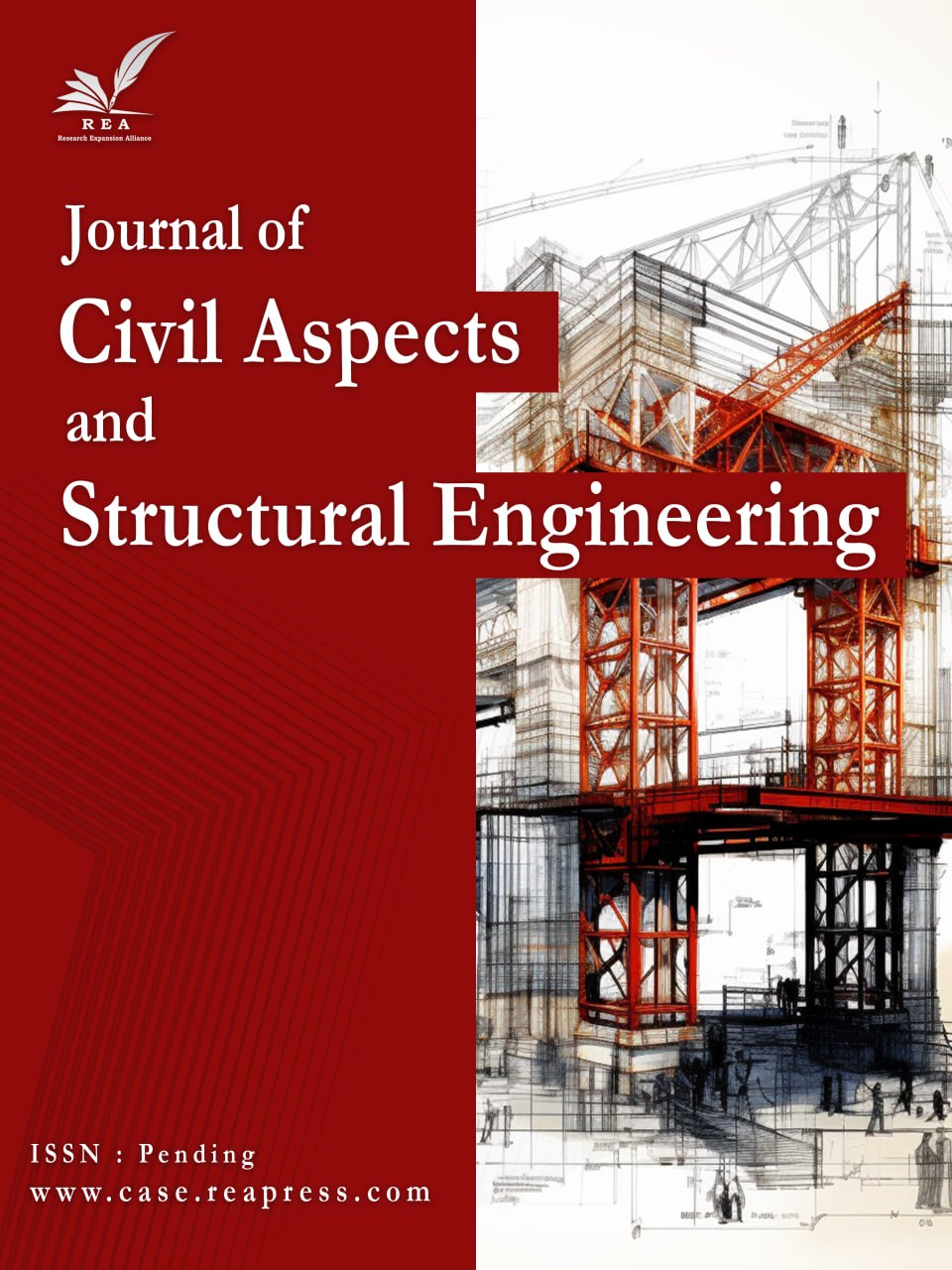Numerical Modelling Using ABAQUS Finite Element Software for Two Types of Beam-to-Column Connections and Reduced Cross-Section Connections to Reduce Progressive Damage
Abstract
If major structural members fail due to accidents, terrorist attacks or similar events, and other members are unable to come to the aid of the failed members, this type of failure will propagate to adjacent members, eventually causing a partial or complete collapse of the structure. The collapse of structures such as the World Trade Centre clearly demonstrates the importance of designing structures to resist abnormal loads. While there has been extensive research in the past on the seismically resistant beam-to-column connections of steel frames, recent studies have focused on the behaviour of these connections against progressive damage. Although extensive research has been carried out on beam-column flexural connections against earthquakes, challenges to the performance of this type of connection against ground shaking remain unresolved. This study, using the numerical finite element method, evaluates the performance of beam-to-column connections in progressive damage and, to improve the performance of these connections, the behaviour of reinforced connections in progressive damage (evaluation of the performance of simple beam-to-column connections, evaluation of the performance of reduced-section connections, evaluation of the performance of simple reinforced beam-to-column connections and evaluation of the performance of reduced-section reinforced beam-to-column connections). As this research is based on numerical and applied modelling, its statistical population is based on data and information from reputable scientific articles and journals. After modelling and outputting the results from the ABAQUS software, the analysis results were entered into Excel, and the graphs were compared and evaluated.
Keywords:
Beam-to-column connections, Finite element software, Reduced cross-section, Progressive damageReferences
- [1] Khan, A. I. (2015). Progressive failure analysis of laminated composite structures. Virginia tech. http://hdl.handle.net/10919/64389
- [2] General Services Administration (GSA). (2003). Progressive collapse analysis and design guidelines. [Thesis]. https://www.engr.psu.edu/ae/thesis/portfolios/2008/dsf139/Documents/GSA.pdf
- [3] Kiakojouri, F., De Biagi, V., Chiaia, B., & Sheidaii, M. R. (2020). Progressive collapse of framed building structures: current knowledge and future prospects. Engineering structures, 206, 110061. https://doi.org/10.1016/j.engstruct.2019.110061
- [4] Sayed, K. K., Fattah, E. E. A. El, & Hanady, E. (2013). Experimental investigation of progressive collapse of steel frames. World journal of engineering and technology, 1, 33–38. http://dx.doi.org/10.4236/wjet.2013.13006
- [5] Al-Salloum, Y. A., Alrubaidi, M. A., Elsanadedy, H. M., Almusallam, T. H., & Iqbal, R. A. (2018). Strengthening of precast RC beam-column connections for progressive collapse mitigation using bolted steel plates. Engineering structures, 161, 146–160. https://doi.org/10.1016/j.engstruct.2018.02.009
- [6] Karns, J. E., Houghton, D. L., Hall, B. E., Kim, J., & Lee, K. (2012). Analytical verification of blast testing of steel frame moment connection assemblies. In Structural engineering research frontiers (pp. 1–19). https://doi.org/10.1061/40944(249)71
- [7] Wang, W., Fang, C., Qin, X., Chen, Y., & Li, L. (2016). Performance of practical beam-to-SHS column connections against progressive collapse. Engineering structures, 106, 332–347. https://doi.org/10.1016/j.engstruct.2015.10.040
- [8] Kim, T., & Kim, J. (2009). Collapse analysis of steel moment frames with various seismic connections. Journal of constructional steel research, 65(6), 1316–1322. https://doi.org/10.1016/j.jcsr.2008.11.006
- [9] Zhang, K., Cao, P., & Bao, R. (2013). Progressive failure analysis of slope with strain-softening behaviour based on strength reduction method. Journal of zhejiang university science a, 14(2), 101–109. https://doi.org/10.1631/jzus.A1200121
- [10] Yang, K. H., Seo, E. A., & Hong, S. H. (2016). Cyclic flexural tests of hybrid steel–precast concrete beams with simple connection elements. Engineering structures, 118, 344–356. https://doi.org/10.1016/j.engstruct.2016.03.045


